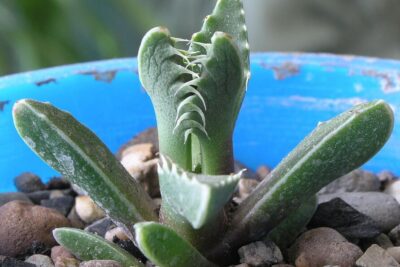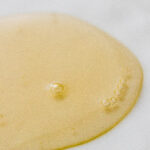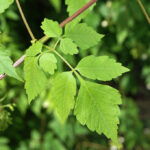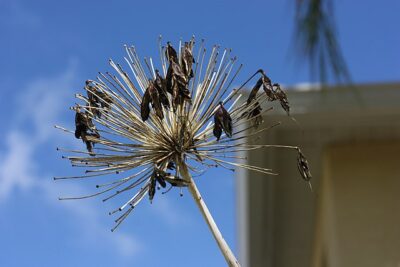
Understanding the Causes of Brown Tips on Fuzzy Succulent Leaves

Fuzzy succulents, such as Echeveria and Kalanchoe, are popular plants among both experienced and beginner gardeners. With their unique textures and vibrant colors, these plants can add a touch of beauty to any indoor or outdoor space. However, one common issue that many succulent owners face is the appearance of brown tips on the leaves. Understanding the causes of this problem is crucial in order to maintain the health and beauty of these plants.
We will delve into the various factors that can contribute to the browning of fuzzy succulent leaves. We will explore both environmental and care-related causes, such as overwatering, underwatering, excessive sunlight, and nutrient deficiencies. Additionally, we will provide practical tips on how to prevent and treat brown tips on succulent leaves, ensuring that your plants thrive and remain visually appealing.
- Check for overwatering and adjust watering schedule accordingly
- Ensure proper drainage by using well-draining soil and pots with drainage holes
- Avoid placing succulents in direct sunlight for extended periods
- Monitor humidity levels as high humidity can lead to leaf rot
- Remove any dead or damaged leaves promptly to prevent further spread of issues
- Avoid using harsh fertilizers and opt for a mild, balanced fertilizer instead
- Keep succulents away from drafts or extreme temperature fluctuations
- Avoid overcrowding by providing adequate space between plants
- Check for pests such as mealybugs or spider mites and treat accordingly
- Consider repotting the succulent if it has outgrown its current pot
- Frequently Asked Questions
Check for overwatering and adjust watering schedule accordingly
One of the most common causes of brown tips on fuzzy succulent leaves is overwatering. Fuzzy succulents, such as Kalanchoe tomentosa (Panda Plant) or Echeveria pulvinata (Plush Plant), have specialized leaves covered in tiny hairs. These hairs help the plant retain moisture and protect it from harsh sunlight.
When these types of succulents are overwatered, the excess moisture can cause the leaf hairs to become saturated, leading to rot and browning at the tips. To prevent this, it is important to check for signs of overwatering and adjust your watering schedule accordingly.
Signs of overwatering in fuzzy succulents:
- Soft and mushy leaves
- Yellowing or browning of lower leaves
- Root rot or a foul smell coming from the soil
- Wilting or drooping despite adequate sunlight
If you notice any of these signs, it is crucial to take immediate action to prevent further damage to your fuzzy succulent. Here are some steps you can take:
- Assess the watering frequency: Evaluate how often you are watering your succulent. Fuzzy succulents generally require less water than smooth-leaved varieties. Reduce the frequency of watering to ensure the soil dries out between waterings.
- Adjust the amount of water: Instead of drenching the soil, water your fuzzy succulent sparingly. Aim for a thorough but light watering, allowing the excess water to drain out of the pot completely.
- Improve drainage: Ensure that your pot has proper drainage holes and that the soil is well-draining. This will prevent water from pooling around the roots and causing root rot.
- Consider the environment: Evaluate the temperature and humidity levels in your succulent's surroundings. Fuzzy succulents prefer drier conditions, so reducing humidity or providing better airflow can help prevent overwatering.
By addressing the issue of overwatering and adjusting your watering habits, you can help your fuzzy succulent recover and prevent further brown tips on the leaves. Remember, it's essential to understand the specific needs of your succulent species and provide the appropriate care for its optimal growth and health.
 Are Succulents Toxic to Cats? Understanding the Potential Danger
Are Succulents Toxic to Cats? Understanding the Potential DangerEnsure proper drainage by using well-draining soil and pots with drainage holes
One of the most common causes of brown tips on fuzzy succulent leaves is improper drainage. Fuzzy succulents, such as Echeveria and Kalanchoe, have specialized leaves that are covered in small hairs or fuzz, which can easily trap moisture. If the roots of these succulents sit in water for too long, they can become waterlogged and start to rot, leading to brown tips on the leaves.
To prevent this issue, it is crucial to ensure proper drainage for your fuzzy succulents. Start by using well-draining soil specifically formulated for succulents and cacti. This type of soil allows excess water to flow through quickly, preventing water from pooling around the roots.
In addition to using well-draining soil, it is essential to select pots with drainage holes. These holes allow excess water to escape and prevent water from becoming trapped at the bottom of the pot. Avoid using pots without drainage holes or pots with saucers that retain water, as they can contribute to waterlogged roots and brown tips on the leaves.
When watering your fuzzy succulents, make sure to do it sparingly. These plants are adapted to survive in arid conditions, and overwatering can easily lead to various issues, including brown tips. Allow the soil to dry out completely between waterings and ensure that the excess water drains out of the pot.
Tips:
- Check the soil moisture level before watering to avoid overwatering.
- Consider using a moisture meter to accurately gauge the soil's moisture content.
- Remove any excess water that accumulates in the saucer or tray beneath the pot.
By ensuring proper drainage through the use of well-draining soil and pots with drainage holes, you can greatly reduce the chances of brown tips appearing on the leaves of your fuzzy succulents. Remember to water sparingly and allow the soil to dry out completely between waterings to keep your plants healthy and vibrant.
 Unveiling the Causes of White Powdery Substance on Succulents
Unveiling the Causes of White Powdery Substance on SucculentsAvoid placing succulents in direct sunlight for extended periods
One of the most common causes of brown tips on fuzzy succulent leaves is excessive exposure to direct sunlight. While succulents thrive in bright light, prolonged exposure to intense sun rays can lead to sunburn and damage the leaves, resulting in brown tips.
When placing your succulents, it is important to find a balance between providing them with enough light and protecting them from scorching sun rays. Avoid placing your succulents in direct sunlight for extended periods, especially during the hottest hours of the day.
If you notice that your succulent's leaves are turning brown at the tips, it is a good idea to move them to a spot with filtered or indirect sunlight. This will help prevent further damage to the leaves and give them a chance to recover.
Monitor humidity levels as high humidity can lead to leaf rot
One of the common causes of brown tips on fuzzy succulent leaves is high humidity. Fuzzy succulents, like Echeveria or Kalanchoe tomentosa, have a natural defense mechanism that helps them retain moisture. However, if the humidity levels are consistently high, it can lead to the development of leaf rot.
Leaf rot occurs when excess moisture gets trapped in the fuzzy hairs on the leaves, creating a favorable environment for fungal or bacterial growth. As a result, the affected leaves may develop brown tips or patches, indicating the presence of rot.
To prevent this issue, it is essential to monitor the humidity levels around your fuzzy succulents. Ideally, the humidity should be kept between 40% and 60%. You can use a hygrometer to measure the humidity levels in the room where your succulents are located.
 Is Neem Oil Safe for Pest Control on Succulents?
Is Neem Oil Safe for Pest Control on Succulents?If the humidity is consistently high, you can take several measures to reduce it. Firstly, ensure proper air circulation by opening windows or using fans. This will help prevent moisture from getting trapped around the leaves. Additionally, avoid overwatering your succulents and allow the soil to dry out between waterings. This will help maintain a balanced moisture level and prevent excess humidity around the leaves.
Remember that while succulents require some level of humidity, maintaining it within the recommended range can help prevent leaf rot and keep your fuzzy succulents healthy and vibrant.
Remove any dead or damaged leaves promptly to prevent further spread of issues
One common problem that succulent owners often encounter is brown tips on the leaves of their fuzzy succulents. While it may seem like a minor issue, brown tips can actually be an indication of underlying problems that need to be addressed. In this article, we will explore the various causes of brown tips on fuzzy succulent leaves and discuss how to prevent and treat them.
1. Overwatering
Overwatering is one of the main culprits behind brown tips on fuzzy succulent leaves. These plants have adapted to survive in arid conditions, and excessive moisture can lead to root rot and other fungal diseases. When the roots are unable to absorb water properly, it can result in the leaves becoming discolored, starting from the tips. To avoid overwatering, make sure to water your fuzzy succulents only when the soil is completely dry, and always use well-draining soil and pots with drainage holes.
2. Underwatering
On the other end of the spectrum, underwatering can also cause brown tips on fuzzy succulent leaves. When these plants do not receive enough water, they may become dehydrated, leading to the browning of leaf tips. It is crucial to strike a balance and provide adequate hydration to your fuzzy succulents. Monitor the soil moisture and adjust your watering routine accordingly, ensuring that the soil is moist but not waterlogged.
3. Environmental Factors
Fuzzy succulents are sensitive to changes in their environment, and certain factors can trigger browning of leaf tips. Exposure to extreme temperatures, direct sunlight, or drafts can stress the plants, causing leaf discoloration. To prevent this, provide your fuzzy succulents with a suitable environment. Place them in an area with bright, indirect sunlight and maintain a consistent temperature range.
 Could Succulent Balls Indicate a Disease?
Could Succulent Balls Indicate a Disease?4. Nutritional Deficiencies
In some cases, brown tips on fuzzy succulent leaves can be a sign of nutrient deficiencies. These plants require a balanced diet of essential minerals and nutrients to thrive. If they lack certain nutrients, such as nitrogen, magnesium, or iron, it can manifest as browning of leaf tips. To address this issue, consider fertilizing your fuzzy succulents with a suitable fertilizer specifically formulated for succulents. Follow the instructions provided and avoid overfertilizing, as it can also lead to leaf burn.
5. Pests and Diseases
Pests and diseases can also contribute to the development of brown tips on fuzzy succulent leaves. Common culprits include mealybugs, scale insects, and fungal infections. Regularly inspect your plants for signs of infestation or disease, such as sticky residue, webbing, or unusual spots on the leaves. If detected, take appropriate measures to control the pests or treat the disease promptly.
By understanding the causes of brown tips on fuzzy succulent leaves, you can take proactive measures to prevent and treat this issue. Remember to always provide the right amount of water, create a suitable environment, ensure proper nutrition, and promptly address any pests or diseases. With proper care, your fuzzy succulents will thrive and display their beautiful, healthy leaves.
Avoid using harsh fertilizers and opt for a mild, balanced fertilizer instead
If you notice brown tips on your fuzzy succulent leaves, one of the possible causes could be the use of harsh fertilizers. These fertilizers, especially those high in nitrogen, can lead to burning or scorching of the leaves, resulting in brown tips.
To prevent this issue, it is recommended to opt for a mild, balanced fertilizer specifically formulated for succulents. These fertilizers have a lower nitrogen content, providing the necessary nutrients without causing harm to the leaves. Look for a fertilizer with an NPK ratio of around 2-7-7 or 3-6-6, which ensures a well-balanced nutrient supply.
When applying the fertilizer, be sure to follow the instructions on the package. Over-fertilizing can also cause brown tips and other negative effects on your succulents. Always dilute the fertilizer with water according to the recommended ratio and apply it sparingly.
 Can Tiny Black Bugs on Succulents Cause Harm?
Can Tiny Black Bugs on Succulents Cause Harm?Additionally, it is essential to fertilize your fuzzy succulents during their active growing season, typically in spring and summer. During the dormant period in fall and winter, succulents do not require as much fertilizer, and over-fertilizing during this time can lead to nutrient imbalances and brown tips.
Key Points:
- Harsh fertilizers high in nitrogen can cause brown tips on fuzzy succulent leaves
- Opt for mild, balanced fertilizers specifically formulated for succulents
- Look for an NPK ratio of around 2-7-7 or 3-6-6
- Follow the package instructions and apply the fertilizer sparingly
- Fertilize during the active growing season and reduce or avoid fertilizing during the dormant period
Keep succulents away from drafts or extreme temperature fluctuations
If you notice brown tips on the leaves of your fuzzy succulents, one possible cause could be exposure to drafts or extreme temperature fluctuations. Succulents, especially those with fuzzy leaves like Kalanchoe tomentosa (also known as Panda Plant or Pussy Ears), are sensitive to changes in temperature and air circulation.
When succulents are exposed to drafts, such as those caused by open windows or fans, it can disrupt their natural growth patterns and lead to brown tips on the leaves. Additionally, sudden changes in temperature, such as moving the plants from a warm indoor environment to a chilly outdoor location, can cause stress to the succulents, resulting in the same issue.
To prevent brown tips caused by drafts or extreme temperature fluctuations, it is essential to keep your succulents in a stable environment. Here are a few tips to help you maintain optimal conditions for your fuzzy succulents:
- Choose a suitable location: Place your succulents in an area where they are shielded from direct drafts. Avoid placing them near open windows, air conditioning units, or fans.
- Monitor indoor temperature: Keep the indoor temperature relatively stable, avoiding drastic temperature changes. Succulents generally thrive in temperatures between 60°F (15°C) and 75°F (24°C).
- Gradually acclimate outdoor succulents: If you plan to move your fuzzy succulents outdoors, it's crucial to acclimate them gradually. Start by placing them in a shaded area for a few hours a day and gradually increase their exposure to sunlight and outdoor conditions over a week or two.
By taking these precautions, you can reduce the chances of your fuzzy succulent leaves developing brown tips due to drafts or extreme temperature fluctuations.
 Can Eating a Succulent Plant Harm My Dog?
Can Eating a Succulent Plant Harm My Dog?Avoid overcrowding by providing adequate space between plants
One of the main causes of brown tips on fuzzy succulent leaves is overcrowding. When succulents are planted too closely together, they can compete for resources like sunlight, water, and nutrients. This competition can lead to stress and ultimately result in the development of brown tips on the leaves.
To prevent overcrowding, it is essential to provide adequate space between your succulent plants. This not only allows each plant to have enough room to grow and spread its leaves but also ensures that they have access to the necessary resources. As a general guideline, leave at least a few inches of space between each succulent when planting them in a container or in the ground.
In addition to providing enough physical space, consider the growth habits of your succulents when arranging them. Some succulents naturally spread out and require more space, while others grow in compact rosettes. By understanding the growth habits of your succulents, you can plan their placement accordingly, avoiding overcrowding and minimizing the risk of brown tips.
Remember: Brown tips on fuzzy succulent leaves can be an indication of stress caused by overcrowding. By providing adequate space between your plants, you can give them the best chance to thrive and maintain healthy foliage.
Check for pests such as mealybugs or spider mites and treat accordingly
If you notice brown tips on the leaves of your fuzzy succulent plants, one possible cause could be pest infestation. Pests like mealybugs or spider mites are known to feed on the sap of succulent plants, causing damage to the leaves and resulting in brown tips.
To identify if your plants are infested with pests, carefully examine the leaves, especially near the tips. Mealybugs can be identified by their cotton-like, white or grayish appearance, often found in clusters along the leaf edges or in the crevices of the plant. Spider mites, on the other hand, are tiny pests that are difficult to spot with the naked eye. However, you may notice fine webbing on the leaves or small dots moving around.
 Will Neem Oil Have Adverse Effects on My Succulents?
Will Neem Oil Have Adverse Effects on My Succulents?If you find any signs of pest infestation, it is crucial to take immediate action to prevent further damage to your succulent plants. Here are some steps you can take to treat the infestation:
1. Isolate the affected plants
First and foremost, separate the infested plants from your other healthy succulents. This will prevent the pests from spreading and infecting the rest of your collection.
2. Remove visible pests manually
If the infestation is not severe, you can try removing the pests manually using a cotton swab dipped in rubbing alcohol. Gently dab the affected areas to eliminate the pests and their eggs.
3. Use insecticidal soap or neem oil
If the infestation is widespread or persistent, you may need to use insecticidal soap or neem oil. These organic solutions can be sprayed directly onto the leaves, targeting the pests and effectively eliminating them. Follow the instructions on the product label for proper usage.
4. Monitor and repeat treatment if necessary
After treating the infested plants, closely monitor them for any signs of reinfestation. If you notice any new pests or brown tips appearing, repeat the treatment process to ensure complete eradication.
It is important to note that prevention is key to avoiding pest infestations in the first place. Regularly inspect your succulent plants for any signs of pests and take necessary precautions to keep them at bay. Additionally, maintaining optimal growing conditions such as providing adequate sunlight, proper watering, and well-draining soil can help strengthen your plants' natural defenses against pests.
By being proactive and taking prompt action, you can effectively treat and prevent pest infestations, ultimately preserving the health and beauty of your fuzzy succulent plants.
 Common White Diseases: Identifying and Treating Succulent Afflictions
Common White Diseases: Identifying and Treating Succulent AfflictionsConsider repotting the succulent if it has outgrown its current pot
One possible cause of brown tips on fuzzy succulent leaves is that the plant has outgrown its current pot. When a succulent becomes too big for its pot, it may start to show signs of stress, such as brown tips on the leaves.
When a succulent becomes root-bound, it means that its roots have filled up the pot and have nowhere else to grow. This can lead to a lack of nutrients and water for the plant, causing the tips of the leaves to turn brown.
If you notice that your succulent has outgrown its pot, it's time to consider repotting it into a larger container. Choose a pot that is slightly bigger than the current one, providing enough room for the roots to spread out and grow. This will allow the succulent to thrive and reduce the chances of brown tips appearing on its leaves.
Here are some steps to follow when repotting a succulent:
- Carefully remove the succulent from its current pot, gently loosening the roots if they are tightly packed.
- Inspect the roots for any signs of rot or damage. If you notice any, trim them off with a clean and sharp pair of scissors.
- Prepare the new pot by adding a layer of well-draining soil at the bottom.
- Place the succulent in the new pot, making sure that the roots are spread out evenly.
- Add more well-draining soil around the roots, gently pressing it down to secure the plant.
- Water the succulent lightly, allowing the soil to absorb the moisture.
- Place the repotted succulent in a location with bright, indirect sunlight and monitor its progress.
By repotting your succulent when it has outgrown its current pot, you can help prevent brown tips on the leaves and promote healthy growth.
Frequently Asked Questions
1. Why are the tips of my fuzzy succulent leaves turning brown?
 Understanding the Reason for White Fuzz on Succulent Leaves
Understanding the Reason for White Fuzz on Succulent LeavesBrown tips on fuzzy succulent leaves are commonly caused by overwatering or underwatering, low humidity, or exposure to direct sunlight.
2. How can I prevent brown tips on my fuzzy succulent leaves?
To prevent brown tips, make sure to water your fuzzy succulents sparingly and only when the soil is completely dry. Provide adequate humidity by misting the leaves or placing a tray of water nearby. Also, avoid placing them in direct sunlight.
3. Can brown tips on fuzzy succulent leaves be reversed?
In some cases, the brown tips can be trimmed off to improve the appearance of the leaves. However, it is important to address the underlying cause (such as overwatering or low humidity) to prevent further damage.
4. Are brown tips a sign of a serious problem for my fuzzy succulents?
Brown tips are usually not a serious problem and can be resolved with proper care. However, if the browning spreads throughout the entire leaf or the plant shows other signs of distress, it may indicate a more significant issue that requires further investigation.
 Identifying & Treating Common White Bugs in Succulent Plants
Identifying & Treating Common White Bugs in Succulent PlantsIf you want to read more articles similar to Understanding the Causes of Brown Tips on Fuzzy Succulent Leaves, you can visit the Pests and Diseases category.






You Must Read